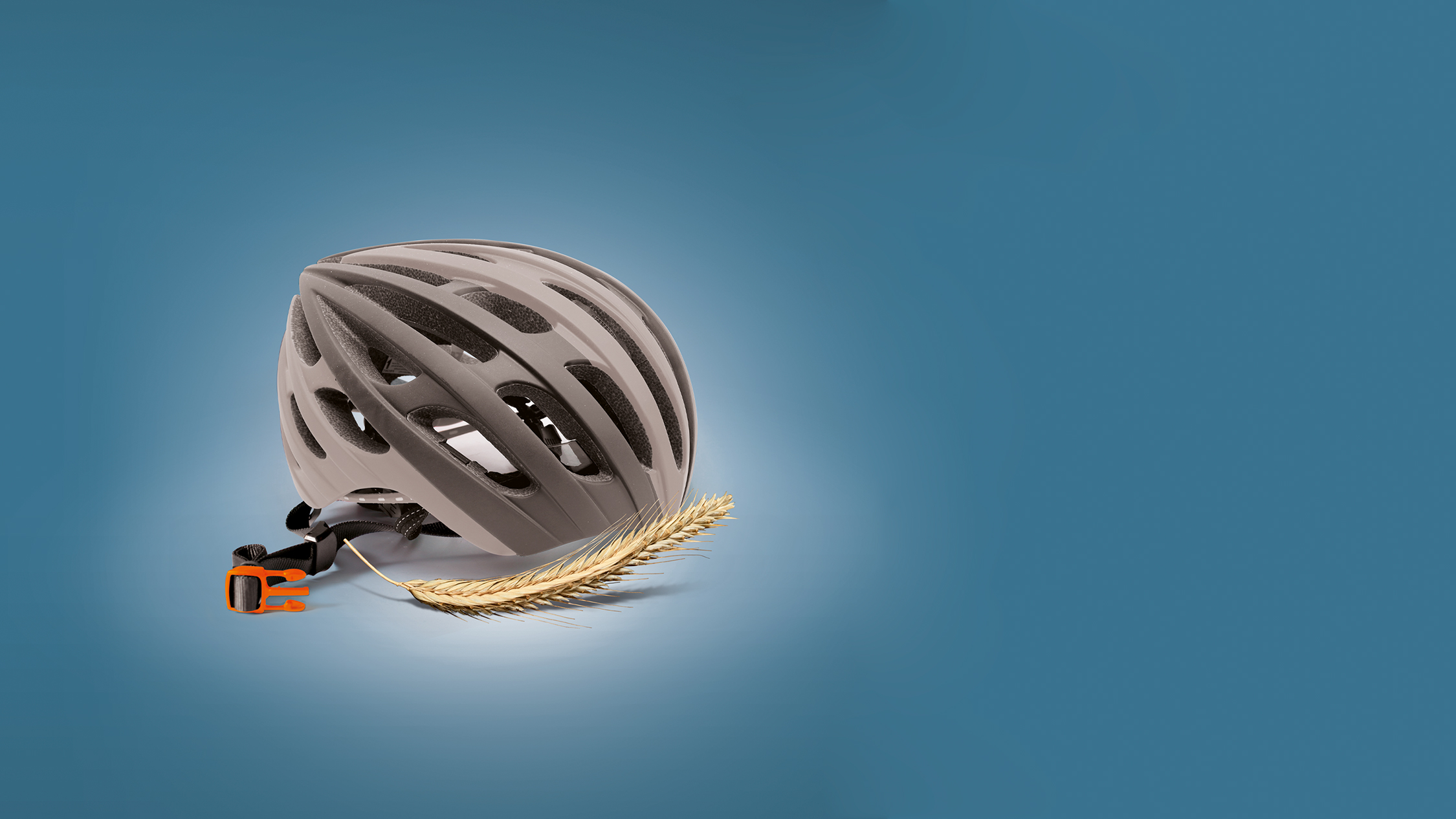Hybrid rye becoming increasingly popular with pig producers
Hybrid rye has replaced a significant proportion of the wheat previously used in pig rations by JSR Farms in East Yorkshire, and the crop’s significant benefits have led to a continual increase in the area grown over the last three years, with more planned for the future.
One of the largest family-owned farming companies in the UK, the business employs 100 staff across multiple sites and comprises of two separate divisions.
JSR Farms grows a range of crops, including wheat, barley, rye, oilseed rape, vining peas, beans, and potatoes on 3800 hectares across eleven farms. These provide wheat, barley, and rye as feed for the pig production business and straw for bedding, all manures and slurries being recycled onto the land as invaluable organic fertilisers.
JSR Genetics, which has established a global brand for profitable pig production, breeds pigs that perform profitably for the producer and create pork of exceptional eating quality for the consumer. JSR Pig Production is one of the largest pig businesses in the UK, with 6000 high health nucleus and multiplication sows supplying breeding stock to JSR Genetics. It also has 3500 commercial sows and finishes over 105,000 pigs per year across 30 sites.
“JSR produces fifty percent of the feed required for our livestock,” Stephen Waite, Managing Director (Pigs and Genetics), states. “Our ability to produce a significant amount of our own feed is an important aspect of our focus on sustainability. Both the feed that we grow and the methods we use for growing it for our livestock contribute to our overall aim of sustainable farming.
“A high percentage of rations are produced through our mill and mix-feed operation at JSR's central storage facility near Driffield. This allows us to incorporate our own high quality home-grown wheat, barley and rye, which increases our efficiency and improves our carbon footprint.”
There have been no palatability issues with rye, and it has totally replaced wheat, which was previously included at up to 50% in finisher rations and 20%-30% in grower rations
Growing interest in hybrid rye
“What piqued our interest in hybrid rye was studying the results of European trials which highlighted the benefits of feeding this cereal to pigs. We dipped a toe in the water in 2019 by growing 87 hectares to find out how it performed on our soils. The crop was drilled on fertile Wold land which is very well drained and performed better than either wheat or barley that year, yielding an average of 10.35 t/ha. Hybrid rye requires fewer inputs than wheat or barley, so it produced the highest gross margin of any cereal crop.
“We used the hybrid rye to produce a range of grower and finisher rations, then evaluated pig performance. Although there was little overall difference across a range of metrics, including feed conversion ratio, the feed cost was slightly lower and JSR Farms benefitted because of the economic benefits to the arable side of the business.
“The results from that initial trial gave us the confidence to grow more the following year. In 2020 we drilled 260 hectares, which produced an average yield of 7.9t/ha. That was somewhat lower than the previous year, but to be expected because the weather in August was particularly challenging.
“Towards the end of August 2020, the price of wheat started to increase rapidly from its harvest low of around £160 per tonne, so we sold 3000 tonnes and bought in 3000 tonnes of rye, which was significantly cheaper, generating a considerable nett financial benefit to the business. With wheat now over £200/t many of our customers and pig production partners are looking at the work we have been doing with rye and considering using it themselves due to the potential cost savings.
“Because of hybrid rye’s agronomic and financial advantages, we will be using more of it in grower and finisher rations. There have been no palatability issues with rye, and it has totally replaced wheat, which was previously included at up to 50% in finisher rations and 20%-30% in grower rations. The nutritional value is very close to that of wheat, but we have adapted the mineral pack to account for any slight variations in nutritional components.
“I have heard people talk about the fact that pigs tend to be calmer and more settled when fed rye, but we had no issues with our pigs before and have not noticed any difference. They are housed in ultra-modern buildings, are robust and exceptionally healthy, so again we have not noticed any difference on that score, or in the N values of the slurry.
“Hybrid rye has quickly become an established part of the JSR Farms’ arable cropping. It requires a relatively low level of inputs, certainly much less than wheat or barley, and that greatly reduces the amount of capital involved in growing the crop, as well as the financial risk. Hybrid rye also performs better than most second wheat crops and barley, which it has replaced, while the extra straw the crop produces is used for bedding on our breeding units.
“Another significant factor is that hybrid rye helps to suppress blackgrass, although that is not much of an issue on the Wolds, where levels are low. More importantly, it gives a nice smooth transition to the harvest, an important consideration for a large-scale farming business which is at the forefront of demonstrating sustainable agriculture, particularly the synergy between the arable and livestock sectors.
“We are always willing to try something new and went into hybrid rye looking for benefits for the arable side of the business, which has been successful. Hybrid rye has performed very well and, ultimately, we could end up growing 750 hectares, mostly to replace wheat and barley in our rotation.
“For 2021 harvest we have 262 hectares of hybrid rye, including KWS Edmondo, and despite the winter being very wet the crop is in good shape. We have budgeted for 7.6t/ha and a minimum production of 2000 tonnes, although we expect it to achieve more.”
Significant benefits for pigs
“Recent studies have demonstrated that providing rye-rich feed promotes animal health through improved gut health and animal behaviour. In Denmark, Germany, Russia, Poland, and Spain, it is already an established component of pig rations and provides a range of key benefits,” John Burgess, Hybrid Rye Manager for KWS UK, states.
“Rye can be fed as a meal, liquid or pellet-based feed and its high dietary fibre content promotes satiety. The most fibre-rich cereal there is, rye contains complex carbohydrate compounds which are steadily and slowly broken down, then converted into glucose in the animal’s small intestine, which leads to a lasting feeling of satiation.
“In sow rations, rye provides several important benefits. During gestation, increased satiety reduces stress and fighting over feed, as well as lowering the risk of obesity. Rye also helps to reduce the duration of farrowing because the arabinoxylan it contains is at a far higher level than in wheat and this is converted to butyrate in the hind gut, which helps to raise energy supply at a time of reduced feed intake. In lactation, this helps to increase colostrum quality and the levels of IgG and IgA maternal antibodies. Butyric acid also likely has a positive influence on the behaviour of pigs when they are being fattened and is very efficient at killing bacteria, including salmonella.
“Rye can be included in finisher rations at up to 70% and because it is a low input, high yielding cereal gives maximum return on feed costs. By improving satiety, rye improves pig behaviour as incidences of tail biting and fighting over feed are reduced. Pig health is also improved because the Short Chain Fatty Acids (SCFA) in rye boost gut microflora, reducing gut wall attachment. Rye also demands more active chewing and saliva uptake, which reduced feed acidity when it enters the stomach. Being 2-3% lower in crude protein than wheat, rye leads to less nitrogen in the slurry, which is good for animals and the environment, while the straw helps to reduce aggression.
Your consultants


.jpg)




